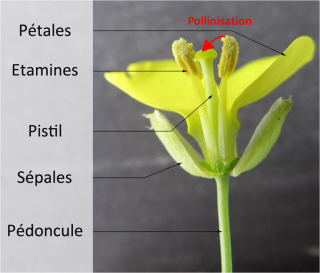What is pollination?
What is the relationship between a bumblebee and a daisy? Discover without further ado what pollination is and why scientists are so interested in it!
Pollination: a plant need
Pollination is the transport of pollen from the stamens (the male part of the flowers) to the pistil (the female part), which enables fertilisation and thus the reproduction of the plant. Since plants cannot move quickly, they have to find ways to exchange pollen grains. Some trees, such as pines, use the wind, but this transport is not very precise. In the case of flowering plants in general, pollination is carried out by an animal. This animal is not necessarily an insect; bats or birds can also participate in pollination in tropical environments. However, it is estimated that 70 to 80% of flowering plants are pollinated by insects.
To life and death
Many scientists are fascinated by pollination because it is a relationship between two types of organisms, some of which cannot live without the other. Sometimes insects feed on only one flower, and that flower is visited by only one kind of insect! In this case, the two organisms each have a form that is perfectly adapted to the other. This is the case with the orchid studied by the scientist Charles Darwin on the island of Madagascar. As with other plants in France, a single butterfly is able to feed on this orchid and thus pollinate it!
Pollination in three stages:
Pollination is a fascinating but complex phenomenon. To make a long story short, we can say that it takes place in three stages:

